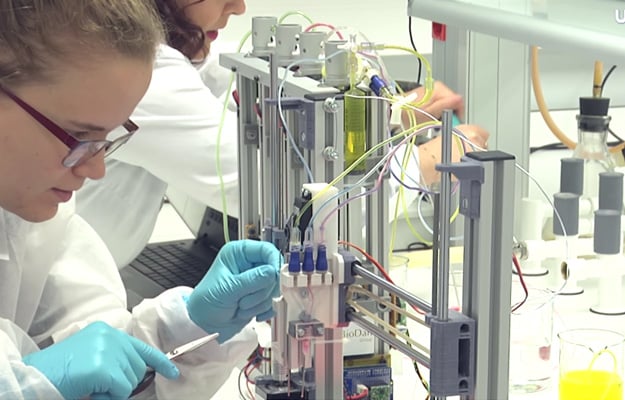Scientists Create 3D Printer That Uses Bio Inks To Construct Living Human Skin

First things first—if you haven't watched the first season of Westworld on HBO, make that a priority. Short of that, at least check out the intro to Westworld, which shows human bodies being 3D printed in striking detail, right down to the muscle fibers. It's science fiction, right? Only until someone makes it a reality. With that in mind, scientists from Spain's Universidad Carolos III de Madrid (UC3M) have developed a prototype 3D printer that can print functional human skin.
This is a big deal. Being able to print human skin would be a boon for transplant patients. It could also lessen the need for animal testing in some situations. The way it works is that the bioprinter uses a special bio ink made up of human cells and other biological components to print out the natural structure of skin, including both the external epidermis and the deeper dermis layer.
Special injectors squirt the bio inks onto a print bed. The resulting skin is bioactive and can produce its own human collagen. In other words, the 3D printed skin is living tissue that can be used for a wide assortment of applications, whether it's a skin graft for a burn patient or to test cosmetics and pharmaceuticals on.
"We use only human cells and components to produce skin that is bioactive and can generate its own human collagen, thereby avoiding the use of the animal collagen that is found in other methods," the researchers state in a paper that has been published in the science journal Biofabrication.
This is just the beginning of what is possible. The researchers believe they could print other human tissues using this bioprinter technology, though that is thinking down the lines a bit. Before they can take that step, regulators need to give approval on their current process for 3D printing human skin.
Another way to look at this is that in less than two years time, we've gone from 3D printing pancakes to human tissue. Cool stuff.

